IMDb meta-data is runtime of 1 hour and 20 minutes, rated 6.8 by 992 cinemtizens.
Genre: Mystery, Canine.
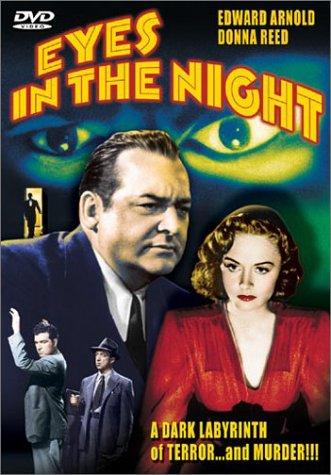
Verdict: A fast start and and fast finish, but in between time passed very slowly.
Veteran supporting actor Edward Arnold plays the lead as a blind detective in the first of a short-lived series of B pictures. He is ably supported by an excellent cast and it starts well.
Eddie has his Alsatian, Friday, to look after him and Allen Jenkins to do the heavy lifting in-between pratfalls, while Mantan Moreland opens and closes doors and his bug eyes. These latter two share the comic distress duties.
An old (girl) friend (hereinafter designated OGF) comes to ask for his help, because her step-daughter Donna Reed (sigh…, went the fraternity brothers) is in love with a gigolo twice her age. What Eddie and company can do about this domestic tangle is anyone’s guess. He tells her to have it out with Gigolo.
OGF takes his advice. (What a sucker, cried the fraternity brothers.) She finds Gigolo cold and dead on the bear rug in front of the fireplace in his bachelor pad. Gulp! She goes back to Eddie, who sets out with Friday and Jenkins for reasons unknown, but a private dick has to do what a private dick has to do, per the script.
OGF’s husband is the incredibly dignified Reginald Denny, a scientist working on a TOP SECRET project that he keeps in his clothes closet at home. Security or what? Or what. He is away being important leaving OGF and Donna at home to tear strips off of each other with a houseful of recently employed servants with foreign accents. Will the clothes closet b safe? The tension did not mount.
So far it has some pace and mystery, but about now occurs a hissing sound that is the air leaving the balloon.
All of the many servants at the house are Nazi spies so incompetent they have not yet found the closet and purloined Reggie’s secret. Donna’s friends who encourage her to antagonise her step-mother, i.e., OGF, are also Nazis. They are everywhere. Friday even looks under the bed for more. The top Nasty is Katherine Emery who gives a masterful performance as a black widow.
Once Eddie is ensconced in the house, the action freezes. He carries on as best he can with the screenplay but really…. He plays the organ; he paces in garden; he listens at doors; he plays the organ some more; he paces in the garden; he listens at doors. Then for a change he repeats the sequence. It was a very long night. And so on.
[It is no surprise to any observer of the absurdity of life, that some IMDb reviewers think the interminable scenes at the house with Eddie playing the uncle are great. Me, watching paint dry would be better.]
The Nasties take him for a fool, underestimating him because he is blind. That is a neat idea but it just does not gel in this rendering. He has some nice lines like this one: ‘Turn out the lights, I am going to read.’ Did he have a Kindle, too? No, he had Braille.
There is a superb confrontation in a darkened cellar where the blind man has the edge, and it is staged and directed with real suspense. Fortunately for the Eddie the Nasties have been knocking each other off to reduce the budget so he does not have to deal all of them at once. Meanwhile Friday shows off his canine athletic ability racing here and there, completing a crossword puzzle on the run. It all comes good in The End.
A second was made but it, too, had a cool reception, perhaps there were too many blind men coming home for the war for it to be diverting. There is a large ensemble cast on show here and many went on to bigger and better things, including Rosemary de Camp, John Emery, Ann Harding, Steven Geray, Stephen McNally, and Barry Nelson in addition to those named above.
But the biggest name is director Fred Zinnemann whose list of subsequent credits runs to: ’Member of the Wedding’ (1952), ‘High Noon’ (1952), ‘From Here to Eternity’ (1953), ‘A Hatful of Rain’ (1957), ‘Behold a Pale Horse’ (1964), ‘A Man for All Seasons’ (1966), and more.
8 November, the old news is best.
392 Emperor Theodosius of Rome banned all pagan worship in the empire in favour of Christianity. Christians celebrated by murdering pagans.

1519 Henán Cortés met Aztec emperor Montezuma in Mexico City. It turned sour soon enough, chocolate or no chocolate. We have been there and hope to see Montezuma’s feather cape in Vienna sometime.

1602 The Bodleian Library at Oxford University opened. Thomas Bodley, a graduate of Merton College, had married a wealthy woman and when she died, he offered to rebuild the library at Oxford University which had suffered during the English Civil War. Both the collection and the building had been sacked by soldiers of the battling armies of Christians. There was a time when readers had to purchase a copy of the catalogue to use the library. Been there.

1895 In Wurzburg Germany, Wilhelm Conrad Röntgen observed X-rays which made the invisible visible. X-Rays were used within two years to locate bullets for surgeons. The ‘X’ meant the source of the radiation was unknown at the time. Had a few.
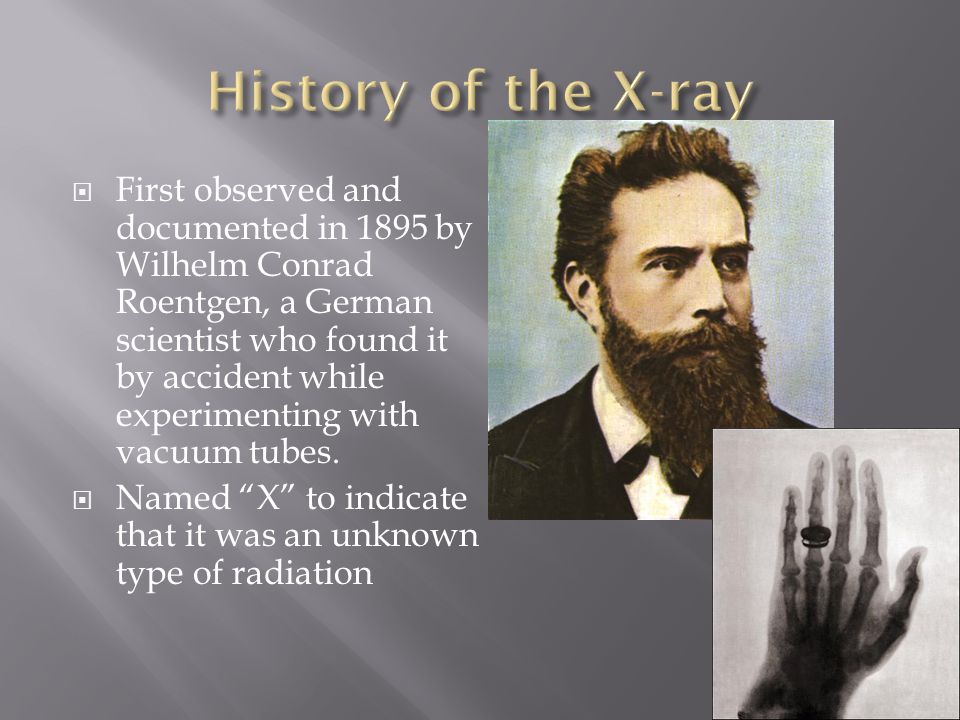
1946 Nova Scotia, Viola Desmond refused to leave a whites-only area in a movie theatre. She was jailed, convicted, and fined. Unlike Rosa Parks, Desmond had no organised support and went it alone. Her likeness now graces the $C 10 bill. Nova Scotia had been a terminus for the underground railroad that transported runaway slaves north.

7 November
1512 In a regime change Niccolò Machiavelli was dismissed from the Republican chancellory by the acolytes of the de’ Medici family. Most of the conventional wisdom, some propounded by the man himself, about Machia is erroneous. See below for details.

1916 Jeannette Rankin from Montana became the first woman to be elected to the U.S. House of Representatives. A lifelong pacifist she was the only member of Congress to vote against declaring war on Japan after the attack on Pearl Harbor in 1941. That ended her political career. She was crucified by the press apart from stalwart William Allan White of the ‘Emporia Gazette’ who recognised her moral courage to stand by her convictions even in these circumstances. She had likewise voted against the declaration of World War I in 1917 along with a hundred others, all men.

1929 The Museum of Modern Art opened in NYC in the building pictured. Rockefeller money made it happen. Been there.

1990 Máire Bean Mhic Róibín became the first woman elected President of the Republic of Ireland, that is Mary Robinson. She started out in the Dublin city council in 1979 and kept going. Saw her give a keynote address at a conference in D.C. once upon a time.

2012 Voters in Maine, Maryland and Washington approved measures for same-sex marriage. Hey, what happened in Minnesota?

‘X the Unknown’ (1956)
IMDb meta-data is runtime 1 hour and 24 minutes, rated 6.2 by 2,242 cinematizens
Genre: Sy Fy

Verdict: A known unknown, to quote Donald Rumsfeld. with whom I once crossed a street in D.C.
A British Army unit practices detecting and securing radium watches on a mired, desolate beach. These are national servicemen who are none too keen on this damp, wet, and muddy duty so they slack off. Then one of them gets burned to a crisp. Now that might stimulate some attention, but no they continue to smoke, rest, and generally act by film extras. More crispy critters are on the menu.
Turns out the practice radium has lured a radium eating blob from deep within the screen writer’s imagination to the surface.
Officialdom reacts according to the McKinsey management manual by denying reality, by blaming the victim(s), by minimising the loss, by claiming pilot error, by blaming Hillary and so on. But the plot must thicken to make a movie. Nearby is a nuclear research centre and also a nuclear power station, plus all those radium dials on watches that were fashionable at the time. In short, it is a picnic ground for the blob from the deep whose appetite has been stimulated.
A couple of adventuresome boys are toasted and the parents blame science, not stupidity. Got it.
Rumpole arrives to investigate and seeks out Baldy, who gets all serious. Baldy is the American import straight from Jefferson High School where he used to supervise Mr Novak. Baldy and Rumpole team up and tame the blob with some mumbo-jumbo, aka science. Blob retreats but will it come again, and what was it anyway? X as above.
The pace is snappy. The atmosphere is effective. The blob is largely unseen and all the more menacing for that. Baldy is authoritative without being arrogant. Rumpole is persistent without being obnoxious, contrary to the current rule of Hollywood.
The tagline on the poster above is ‘It can kill but cannot be killed.’ Why did I think of McKinsey management training sessions? Is this another unknown? Dunno.
Steve McQueen must have gotten a few tips from this picture when he encountered his own blob.
The screenplay was originally intended to continue Hammer Films run of success with Professor Quatermass. However, Nigel Kneale, who owned the copyright to Quatermass, would not relinquish it, i.e., not enough dosh was on offer, and so Baldy was re-named.
As is sometimes the case, there is more drama behind the camera than in front of it. Hammer had hired Jospeh Losey to direct.

He went on to do many superb films like ‘The Servant’ (1963), ‘The Go Between (1971), ‘Mr Klein’ (1976), and many more.
However, Baldy refused to work with Losey. Losey had escaped the monster that roamed 1950s Hollywood, HUAC, while Baldy was a 100% Moron who would have nothing to do with this pinko. Either he goes or I go, he is supposed to have said. The producers made the wrong call and kept Baldy.
They got lucky though because Leslie Norman did a fine job of filling in as director at short notice. He went on to be a regular with ‘The Avengers.’ The screenplay by Jimmy Sangster is low-key and lets the action carry the story. There is no exposition. No effort to make anyone sympathetic with a boring backstory. He cranked out many a story for Hammer over the years.
5 November has quite a history.
1605 The Gunpowder Plot of Guy Fawkes failed. The plot was to displace King James I with a Catholic and annihilate protestants. He had twenty barrels of gun powder in the cellars under parliament where the king was scheduled to appear.
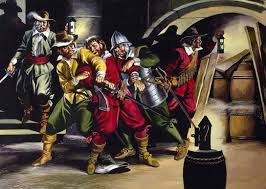
1872 Susan B Anthony was arrested in Rochester, New York for voting for U S Grant in a presidential election. She refused to pay a fine and the court declined to take any further action. She was a tireless campaigner for womens suffrage.
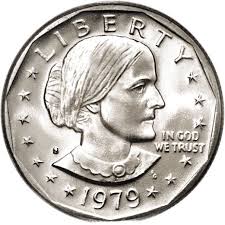
1893 Twenty-year-old Willa Cather began publishing a column called ‘As you like it,’ in the Nebraska State Journal of Lincoln. She loved the Great Plains and its peoples, new and old, and more.
We have made pilgrimage to Red Cloud more than once.
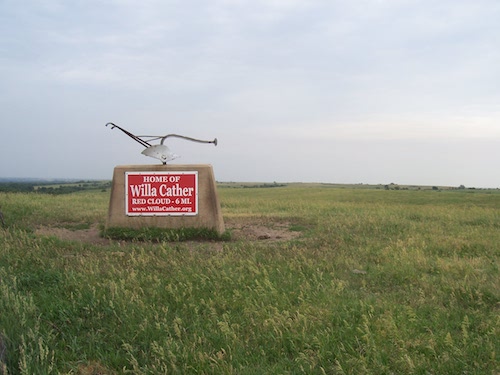
1935 Parker Brothers company launched Monopoly, a game of real estate and capitalism at the height of the Great Depression. Played many a game of that.

1956 The ABC’s first television broadcast. JD was still reading the news to me in 1974.

6 November has some old news.
1572 A supernova (SN1572) was observed in the constellation now known as Cassiopeia. Many observed it including Tycho Brahe in Denmark. He was not the first to see it but his measurements and analysis were the most precise and comprehensive. We went to a planetarium named for him in Copenhagen and saw his observation tower in Prague, too.

1917 The Bolshevik launched a coup d’etat against the Kerensky government in the Winter Palace, now know as the Hermitage. They entered the white dining room at 2:10 AM to arrest the remnant of the provisional government cabinet. Kerensky had left to mobilise loyal troops and kept going. I heard him give a talk as an undergraduate. We have shuffled through this room and down the stairs the Bolsheviks came up.
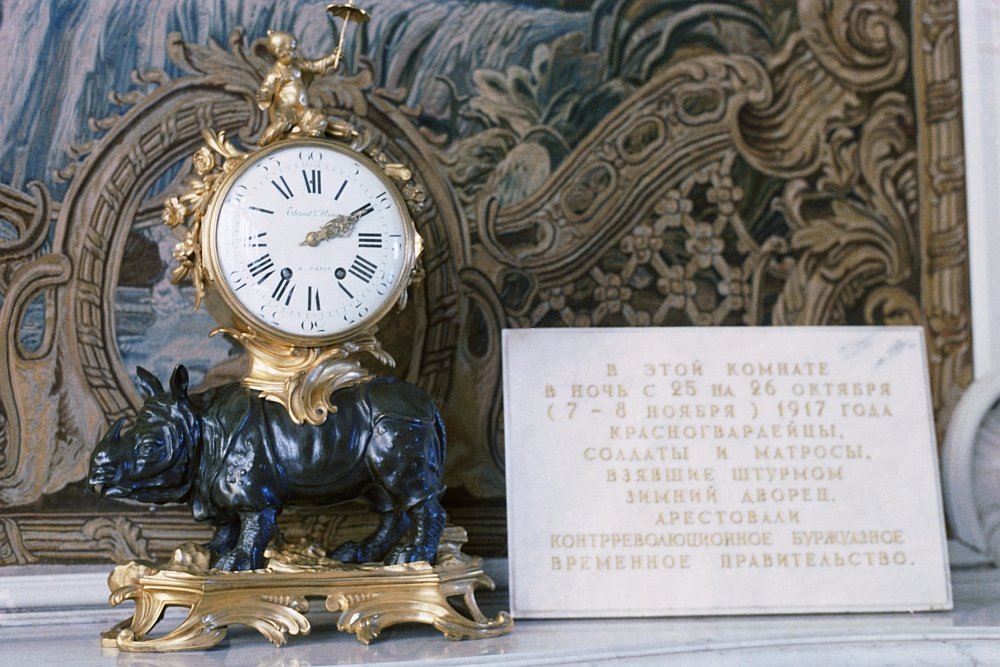
1867 The Canadian House of Commons met for the first time with Conservative John A MacDonald as Prime Minister.
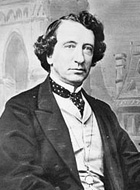
1870 Louisa Ann Swain in Laramie Wyoming became the first woman to cast a vote in a federal election. In 2008 Congress designated 6 November as Louisa Swain Day. We have been to Laramie but in our ignorance we did not see this statue in front of the Women’s History House.

1962 UN General Assembly voted to condemn South African apartheid and called on member states to boycott it.
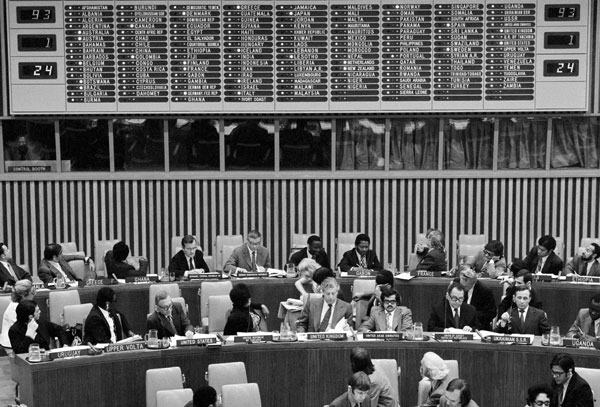
1999 Australians voted against becoming a republic in a national referendum. Only in the Never-Never Land of the ACT did the republic secure a majority. It was a dreary campaign in which the self-styled Republicans vied with each other for the spoils of the victory they assumed, rather than working for it. That is, individuals modestly put themselves forward as the president of a future republic, including some known to me personally. Yuck.

‘The Thirteenth Guest’ (aka ‘Lady Beware’) (1932)
IMDb meta-data is runtime is 1 hour a 9 minutes, rated 5.9 by 551 cinematizens.
Genre: Old Dark House

Verdict: Several rungs below mediocrity.
Went backward to see the original version the film already discussed earlier on this blog. Its only claim to fame is that it stars Virginia Kathrine McMath of Independence, Missouri. She plays two roles, one of them very brief.
As above, and often word for word the same, but with a little more explanation and less forced humour from the detective. There is a even a reference to the thirteenth guest at the end, though it makes no sense. The completely incompetent cop is the nephew of the police chief. The detective is a relative of the other copper.
Here, as in the version discussed earlier, the detective orders the police around, carries off evidence with their approval, sequesters witnesses at his home, and generally runs the show while the police say ‘Yes, Sir’ to this arrogant and supercilious twit. He is also patronising to women. An all rounder. Don’t blame the actor, he is written that way.
The best part is that the villain who hides in secret passages and hidden basements wears a rubber mask, hood, and cape. That get-up must have been heavy and hot. It was also pointless since no one ever saw him in it. What a slave to fashion he is. None too bright either, because he puts the switch he uses so far away from his peep hole he can never reach it in time.
Lyle Talbot played the lead, and it is easy to see why Nebraska’s own Talbot receded to supporting roles where he compiled a massive 332 credits, ending in 1987. Maybe the thing to say about him is that the ‘Known for’ entry on the IMDb lists for him ‘Plan 9 from Outer Space’ (1959), where that picture might have better stayed. It is discussed elsewhere on this blog.
The pace is leaden. The direction is leaden. The dialogue is leaden. Not even Virginia Kathrine McMath is allowed to liven things up. She is Miss Ginger Rodgers.
4 November has been quite a day!
1879 James Ritty, saloon keeper of Dayton Ohio, patented the first cash register to reduce pilfering by bar tenders. Bars, I have known a few.

1890 The Prince of Wales opened the first London Underground station in a deep-level tube line, the City and South London Railway, between King William Street (close to today’s Monument station) and Stockwell. Electric locomotives towed carriages with small opaque windows, nicknamed padded cells. Used the Tube many a time.

1922 Archaeologist Howard Carter found the entrance of the tomb of King Tutankhamen. A water-boy stumbled under a load and dislodged stones that revealed a cut step. Carter had been digging in Egypt for nearly thirty years and realised the potential significance of such a step, covered it with earth, and telegraphed Lord Carnarvon, his patron, to come and have a look. Seen King Tut artefacts at museums here and there, Sydney and Berlin.

1924 Nellie Taylor Ross and Miriam Ferguson were elected the first and second women governors of Wyoming and Texas, respectively. The sky did not fall in either state, despite that being widely predicted. Nor did either of their male opponents commit suicide at the shame. Been to both states.

1993 The Maastricht Treaty established the European Union, paving the way for the free movement of people and goods and the Euro. In the end of year round up in 1993, the ABC Television news did not feature this treaty but did include bus crashes in India, and grass fires in California. Ah news-judgement is what the national broadcaster is famous for. Drove to Maastricht once to confer with a colleague about a project and found the geography in that area is hilly, very unlike elsewhere in the Netherlands.

3 November then….
1507 Messer Gherardini commissioned a painting of his wife. It’s still not done. The painter was an inveterate revisor and carried it around for nineteen years daubing at it now and again, and then watching the paint dry. It was in his possession when he died in France as a guest of the King and it passed into the patrimony of that nation. Gherardini never got back the deposit he had paid.
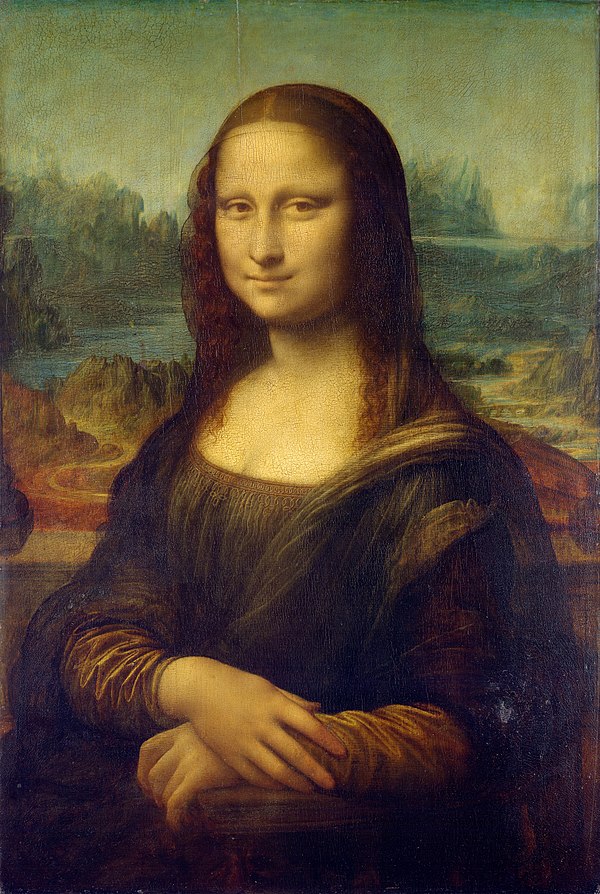
1892 The first automatic telephone exchange went into service in La Porte, Indiana. The public demonstration was greeted with much fanfare, including a brass band and a special train run from Chicago. Guests included power company executives, journalists, entrepreneurs, inventors, and two representatives of the Russian czar. Almon B. Strowger, a local undertaker, conceived and built it. The Strowger switch remains vital to the inner workings of many a telephone. For years afterward some people preferred to call an operator rather than use this new fangled iPhone.
1913 First modern elastic brassiere was patented by wealthy New York socialite born Mary Phelps Jacob. When dressing for yet another ball she rejected the proffered whale bone corset and told her maid, ‘Bring me two of my pocket handkerchiefs and some pink ribbon … and a needle and thread and some pins.’ Together they fashioned the handkerchiefs and ribbon into a simple bra. The elastic came in the next iteration. After the dance she was besieged by other women who wanted to do likewise. She founded the Fashion Form Brassière Company but had little interest in running it and sold it for a pittance. She was already wealthy and stayed that way.

1930 The mile long Detroit-Windsor tunnel opened. An engineering wonder at the time because it had to be very deep to get under the lake bed. At four dollars the toll was about half the cost of using a ferry to transport an automobile across the lake.

1953 Clarence Birdseye marketed frozen peas, heralding the frozen foods advent. The first test marketing was in Springfield Massachusetts as pictured below. Birdseye was an entrepreneur as a child and naturalist from birth. His family and friends called him Bugs because of his fascination with creatures great and small. When he left college he worked for the United States Department of Agriculture where he saw great bounty in food go to waste, and in the west and northwest he experienced freezing temperatures. These two came together in his mind. In time he sold the company for a mint and used the money to continue experimenting on food preservation to the end of his days.

‘The Mystery of the 13th Guest’ (1943)
IMDb meta-data is runtime of 1 hour flat, rated 5.4 by 354 insomniacs.
Genre: Old Dark House

Verdict: Mysteries aplenty.
On her twenty-first birthday Marie goes to the one-time family home, which has been empty for thirteen years and became an Old Dark House with sliding panels, secret passages, sub-basements, priest holes, and other conveniences. Evidently none of these things were in the house when she lived there because she knows nothing….about them.
Thirteen years earlier her grandfather had a family dinner and denounced his relatives as useless, greedy sods, all but little, innocent Marie. Her two child brothers are also included in the denunciation, it would seem. An empty chair at the table represented the thirteenth guest, and Gramps said he would explain that later. We are still waiting Gramps! We have waited more than six years! It is never explained.
Gramps entrusted an envelope for Marie with the attending family attorney, whom he also accused of greed. Is that smart Gramps? First accuse him and then hand over the goods? Gramps also assumed Marie is going to remain innocent until age twenty-one. Gramps did not get out much.
Years later on the appointed day the lawyer gives her the envelope and she has to take it to the ODH and open it there. Why is anyone’s guess. The screenwriter kept that to himself. In it is the message 13-13-13. Gramps is inscrutable. Is that a cube root in the making? Yes it is thirteen years later and that has something to do with the thirteenth guest. Huh?
At the abandoned house Marie discovers the electricity is connected and so is the telephone. Everyone else rediscovers this without ever considering the implications. ‘Zap!’ being the major one.
Thereafter the murders begin. We never do find out the identity of the first and last victims. Huh?
The murderer also posed the murdered victims at the table. Why? Who knows. Maybe he was trying to find number thirteen.
Spoiler alert. Turns out the greedy lawyer is the murderer. Hmm, and he is not a very bright murderer. He wanted the envelope which he had in safekeeping for thirteen years. Why not take a peek? Guess it did not occur to the screenwriter. That would have been easier than all the rigmarole at the ODH. That must have been covered in law school. Did he sleep through every class?
Moreover, we discover the numbers 13-13-13 are a safety deposit box that holds a will that leaves everything to Marie. Any shyster lawyer could surely have streamed open the envelope, and just as easily as Marie was to do, figure out it was a safe deposit box, and finagle opening it. That certainly is covered in the law school curricula, for why else go to law school? By the way, how did she make the leap from 13-13-13 to a safety deposit box? We’ll never know.
In a classic ploy the villain hired a private dick to guard Marie, and tell him what she is doing. That dick is Dick Purcell who has a script from a different movie. He makes jokes and laughs as the bodies fall. He laughs a lot at his own jokes. This rugged he-man died with a year of a massive heart attack.
Even more annoying is Frank Faylen as a dumb cop, so favoured in movies of the era, but at least this comic distress is not a black man or a woman. The other dumb cop has no excuses since he was one of the authors of the screenplay.
Given the screenplay, the direction by journeyman William Beaudine is crisp and well paced. The gaffes and gaps are in the text, not the direction or the editing.
When the film was released the U.S. Marine Corps had engaged the Japanese on Bougainville in the Solomon Islands, and this indecisive but bloody battle would contain to the end of the war. Naval engagements off Bougainville were likewise indecisive but murderous. Meanwhile in Europe, Blond Germans were busy murdering Jews, Gypsies, Masons, homosexuals, and red heads.
